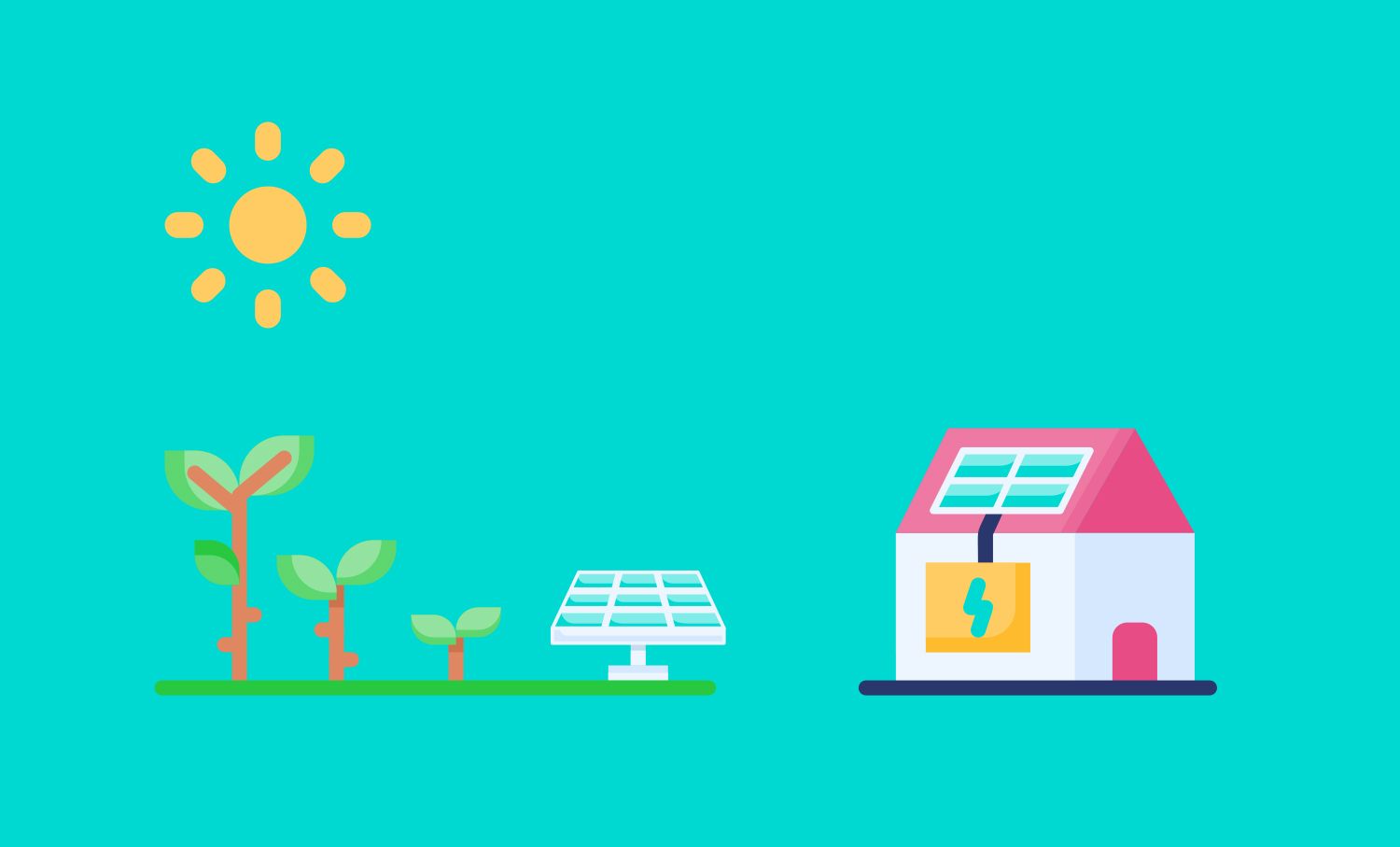Solar Energy, How Does It Work?
Solar Energy, How Does It Work? As energy prices climb, many people are looking for ways to reduce their costs and increase their energy efficiency. Solar PV systems are a great way to do this, but how exactly do they work?

As energy prices climb, many people are looking for ways to reduce their costs and increase their energy efficiency. Solar PV systems are a great way to do this, but how exactly do they work?
Solar PV systems main purpose is to harness energy from the sun to use as power, but how is this done? The key components of the systems are the solar panels, placed on the roof of the building. Each solar panel contains photovoltaic (PV) cells, which are used to absorb the sunlight, also known as photovoltaic energy. These cells are packed into the panel between two layers of semiconducting material, which allows the energy to be transported into the other components of the system.
The absorbed sunlight is turned into direct current (DC) by the panels. However, most buildings run alternating current (AC), so another component must turn the DC into AC. This component is referred to as an inverter. The number of panels in a system and the power outage of each of these individual panels (kWp) corresponds directly to the amount of energy produced by the solar PV system. Therefore a system with a higher number of panels or a system whose panels have a higher output will thus create more energy.
How does the weather affect a solar system?
The energy generation from a solar system depends largely on solar irradiance, i.e. how much light is produced by the sun. Generally solar irradiance peaks at midday, thus the ability for the most solar PV generation occurs at this point. The amount of irradiance depends on factors such as whether there is cloud cover present or a clear sky.
A cloudy day will impact the efficiency of your panels, however it will not cause them to stop working. According to the Environmental and Energy Study Institute (EESI), even in partly cloudy weather, solar photovoltaic cells can still operate at up to 80% of their maximum output. This is due to the fact that solar PV panels need daylight (‘diffuse’ light) not sunlight (‘direct’ light).
Solar PV systems do not need high temperatures to operate efficiently. On the contrary solar panel output actually begins to fall if the temperature rises above 25 degrees Celsius. Furthermore, even rain can be a positive thing, as rain can actually help to keep panels operating efficiently by washing away any dust or dirt which may have accumulated.
How the system manages varying energy demand
As we know, solar irradiance peaks in the summer months, before dropping off in the autumn and winter. Therefore, depending on the cloud cover and the quality of the solar panels, efficiency can drop at different points of the year, however this is not a major issue due to another component of the system, the storage battery.
A solar storage battery is a battery system that can be integrated with your solar panel system. As your panels convert sunlight to electricity, unused energy will charge the battery, which the building can then draw from when panel output is low. Solar storage batteries can be stalled in various storage capacities to help maximise the consumption rate of energy from a system.
How to use excess produced energy
During times of high generation, the system aims to ensure that it maintains a high self-consumption rate, this can be done in a variety of ways. A diverter within the solar PV system will monitor when you are generating excess electricity, and will re-route this electricity to your immersion to heat up your water.
Many solar systems now also use smart system integration. This is when predictive energy intelligence is utilised to manage energy flows. It does this by predicting the energy demand and offering solutions to ensure the storage and consumption rates of energy are balanced.
This means it will manage and decide when to store energy in the battery and how to use excess. For example, it could use the excess to charge an electric vehicle whilst still ensuring that the storage battery is sufficiently charged. A final option for excess generated energy is to export it back to the grid, where the user may receive compensation for this diverted energy.
Why invest in solar?
Solar PV systems are a great step for anyone looking to improve the energy efficiency of their building. They have a long lifespan and can provide clean energy for many years. They are suitable for buildings with high consumption especially in summer months as they are designed to maximise the consumption of energy generated. The energy from the system can be used to reduce costs in many areas as it has the ability to be used in many ways as discussed above. Overall a solar PV system is a great option for anyone looking to improve efficiency, reduce costs and go green.
Take a look at our new smart Opportunities Register page to see what other ways you can improve your energy efficiency!
Sources: